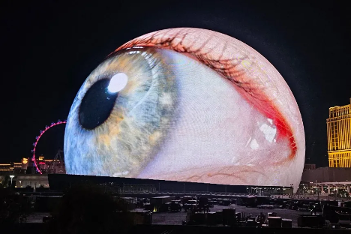
Posted October 20, 2023
By Chris Campbell
The New Shape Of Tech
For the past 50 years, our leaders have been under one delusion:
Everything can be measured, therefore everything can be controlled.
As in:
Scientific formulas and models always lead to measurable, foreseeable outcomes.
As in:
Humans are pretty much machines: initiate a command and wait for a particular result.
As such:
The world (and the economy) can be micromanaged to such an extent that a small group of experts can create a utopia.
In this paradigm…
Everything was simple. Certain. The path was clear. All humanity had to do was walk it. (Or else!)
Over time, however, that certainty waned.
Most people now understand the geniuses at the top were playing a shell game.
Most of the convictions we held in the 20th century weren't genuine truths, crafted from hard work, rigor, grit, and sacrifice. Instead, they were commoditized truths gilded in a scientific gloss.
Lead in gasoline is safe. Sugar is better than fats. Opioids aren’t addictive.
Take also the leaders of central banks, and their board of governors. From atop their perches, they determine the value of money, the most crucial yardstick for any civilization.
50 years ago, we were absolutely certain they knew what they were doing.
Now? We know better. But we also know it doesn’t matter -- what they say goes.
In 50 years, central bankers have gone from monetary scientists to financial soothsayers.
As Lyn Alden, author of Broken Money, puts it:
"They divine the tea leaves, and every six weeks, everybody tunes in to see what color smoke's going to come out of the group of 12 people sitting around the table to decide."
In short…
The 20th century was a fever dream of certainty. The experts are now undergoing an “ego death.”
The Atom and the Sphere
The "Age of Certainty" describes a time when things were believed to be fixed, deterministic, and predictable.
Our institutions, beliefs, and systems were seen as stable and unchanging.
The icon of the 20th century was the atom.
Singular. Certain. Individual.
It represented both the promise of atomic energy and the peril of nuclear weapons. It symbolized the reductionist approach of understanding dynamic complex systems by breaking them down into their smallest parts.
If you invested in atoms in the 20th century, you did pretty well.
Today, quantum physicists will say, “The atom is dead.”
We now know that, contrary to previously thought, atoms aren’t fixed, deterministic, and predictable. They are complex, uncertain, and probabilistic.
Thus, we need a new icon to help us understand and master the era of complexity, uncertainty, and probability.
I propose this icon is the sphere.
After all, the sphere is a much more fitting representation of the Internet age. It represents a structure without a center or edges, much like networks.
Boundaries are less rigid, and value is derived from the ability to connect, share, and collaborate.
Consider:
In the world of quantum mechanics, the "Bloch sphere" is a representation used to visualize the state of a quantum bit (qubit). As quantum computing becomes more mainstream, this spherical representation of qubit states becomes more significant.
Initiatives like SpaceX's Starlink aim to envelop the Earth in a sphere of satellites, providing global internet coverage. This "sphere" of technology has the potential to connect every corner of the Earth.
Technologies such as blockchain and distributed ledgers eschew centralized control in favor of a system where all nodes, or participants, operate on equal footing. This creates a spherical topology in which information and value flow freely without central intermediaries.
VR and AR immerse users in spherical environments, where they can experience 360-degree surroundings. The traditional flat interfaces of screens and media are giving way to omnidimensional perspectives, allowing for more immersive experiences. (And better ways to prototype new technologies.)
With the advent of edge computing and decentralized AI models, artificial intelligence is no longer restricted to central servers or specific locations. Instead, AI processing can occur anywhere in the global "sphere" – from a smartphone in one's pocket to sensors in remote locations.
And perhaps The Sphere in Vegas is just a sign of the times:

In short…
The winners of the 20th century invested in atoms. The winners of this century will invest in spheres, or “omnidimensional technologies.”

